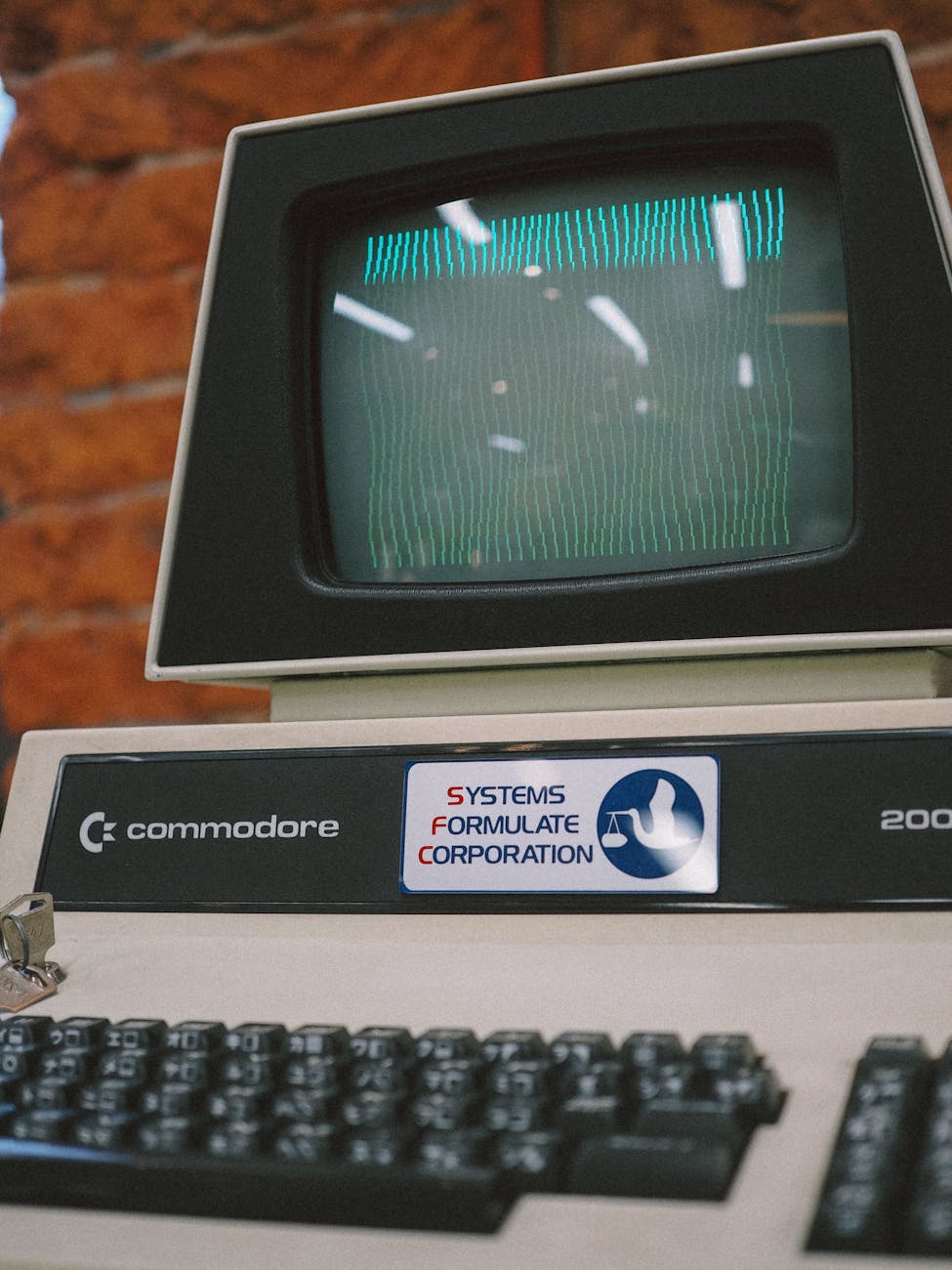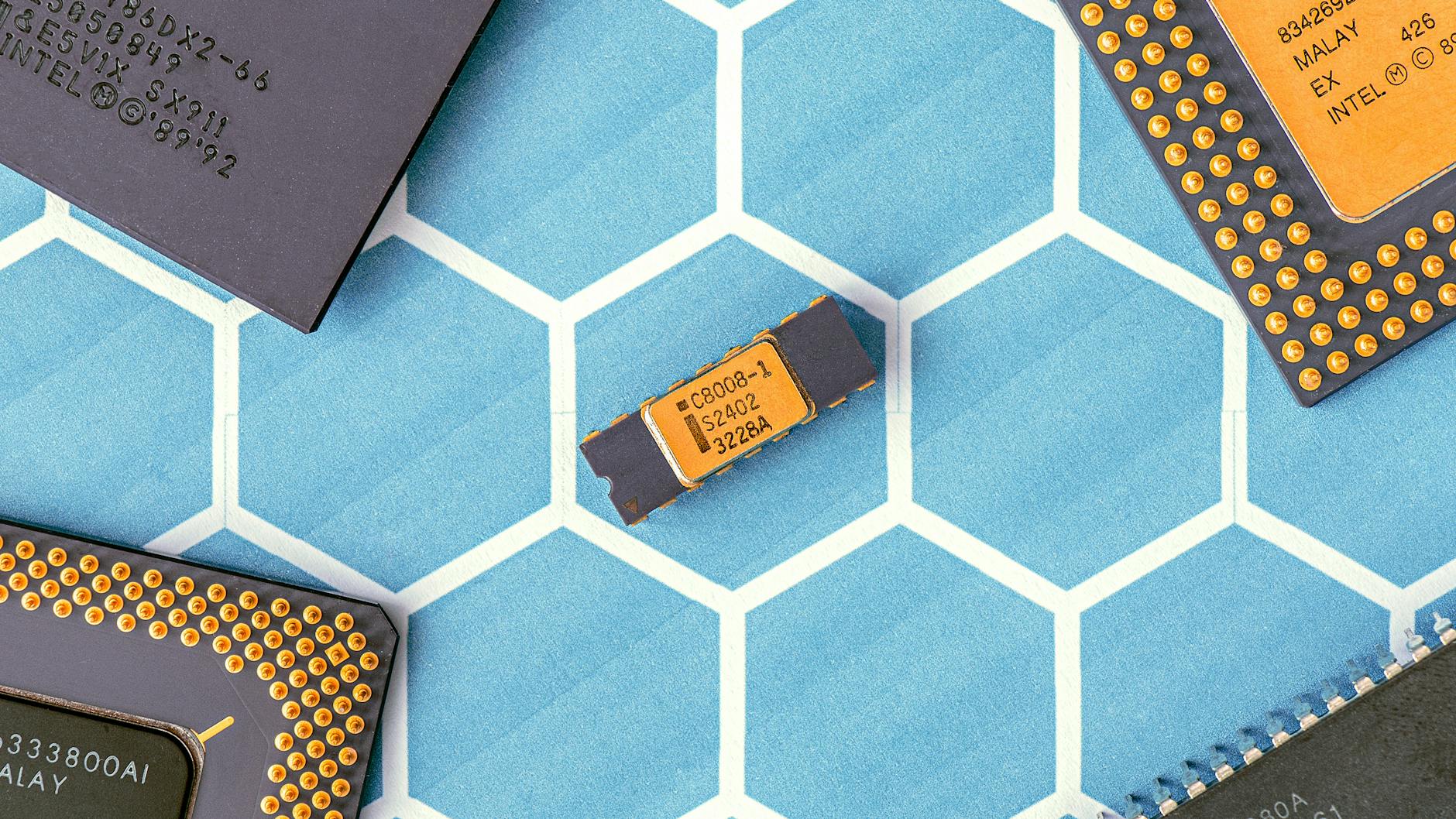The Remarkable History of Commodore Computers
The Rise of Commodore
Let’s take a stroll down memory lane and see how Commodore transformed from a humble calculator maker to a big shot in the home computer arena.
From Calculators to Home Computers
Commodore kicked off in the late ’50s thanks to Jack Tramiel, and started out with electronic calculators (illumy). Fast-forward to the ’70s, folks wanted computers at home, and Commodore took the hint. They hit a goldmine with the Commodore PET, a trailblazer that lit the path for future gadgets. Wanna know about those early gadgets? Visit our piece about vintage commodore computers.
Success with the VIC-20
When the VIC-20 hit the scene in 1980, things got interesting. This gizmo was budget-friendly and easy-peasy to use, so it quickly turned heads in homes across the globe (illumy). It wasn’t just any computer; it was the first to hit a million in sales, cementing Commodore’s status.
| Model | Release Year | Units Sold (millions) |
|---|---|---|
| VIC-20 | 1980 | 1 |
Dominance with the Commodore 64
The Commodore 64, popping up in 1982, took things further and became a legend. With snazzy features like color graphics and sound, it appealed to gamers and tech whizzes alike.
Back in the tail-end of 1983, it racked up $49 million in sales, which today would be about $126 million (Wikipedia).
| Model | Release Year | Peak Quarterly Sales (USD millions; 2023 equivalent) |
|---|---|---|
| Commodore 64 | 1982 | 126 |
For the lowdown on what made the Commodore 64 a superstar, swing by our article on the commodore computers legacy.
Hopefully, this sprinkles some insight into Commodore’s wild ride to the top of the computer game. Curious about the jump from the PET Series to the Amiga line? Check out our piece detailing Commodore’s full product line.
Introducing the Amiga Line
Acquisition of Amiga Corporation
Let’s kick off our tale of the Amiga line by diving into Commodore’s bold move to snatch up Amiga Corporation in 1984. Back then, the competition was stiff, with IBM and Apple breathing down their necks. Commodore wasn’t sitting idle—they snagged Amiga Corporation, a company tinkering with snazzy graphical and multimedia tricks. This little coup let Commodore get creative and stay in the tech race.
The Amiga’s Innovative Features
Enter the stage: the Amiga 1000 in 1985. This gizmo was not messing around, packing features that left its rivals eating dust.
| Feature | Description |
|---|---|
| Full-Color Graphical Interface | Brought vivid, high-res eye candy to the table |
| Preemptive Multitasking | Let multiple apps dance together without tripping |
| Advanced Sound Capabilities | Flaunted four-channel stereo sound—unheard of back then |
The Amiga 1000 quickly earned its street cred for rocking multimedia and gaming. It was the go-to for video buffs, gamers, and all things creative. These snazzy tweaks clinched Amiga’s spot as a big shot in the computer crowd.
Challenges and Decline
But alas, the Amiga line faced rough seas despite its flashy start. Competition from heavyweights like IBM and Apple’s Mac made surfing the market tricky. Those fancy custom hardware bits? They were burning a hole in Commodore’s wallet.
| Year | Event |
|---|---|
| Late 1980s | Internal drama and missteps tangled Commodore’s gears |
| 1992 | Commodore hit the skids and filed for bankruptcy |
| 1994 | The end of the road—Commodore sold off in parts |
| 1996 | Escom, the buyer, bit the dust and Amiga faced the axe |
Inside squabbles and poor choices put Commodore on the ropes, leading to its unfortunate crash in 1994 and eventual sell-off. Yet, the Amiga’s story proves Commodore’s knack for pushing computing limits. It’s a tale worth remembering.
Get your nostalgia fix and dive deeper into Commodore computers’ legacy. If you’re a vintage tech buff, look into vintage Commodore computers for more riveting details.
Commodore’s Downfall and Aftermath
Internal Conflicts and Competitor Pressure
Our old pal Commodore was cruising along quite well until the late ’80s and early ’90s when things started to get a bit messy. It faced a storm of challenges—think of rivalries with IBM PCs and Apple machines muscling in on its turf. Throw in some bickering at the top and a few questionable decisions, and you had a recipe for trouble (illumy). Sadly, Commodore’s slide downhill was also fueled by not keeping pace with snazzy new Amiga models, which just couldn’t match up to the IBM PC and the Apple Macintosh.
Bankruptcy and Asset Acquisition
The bad times peaked when Commodore had to hit the brakes on April 29, 1994, filing for bankruptcy with co-founder Irving Gould and president Mehdi Ali steering the ship (Wikipedia). By this point, the cupboards were overflowing with unsold A600s, and their shiny new CD32 gaming console wasn’t exactly flying off the shelves (C64 Forever).
| Year | What Happened Here? |
|---|---|
| 1987 | Trouble starts brewing inside |
| 1992 | Commodore throws in the towel |
| 1994 | Doors shut for good |
| 1994 | Escom swoops in for a bargain |
| 1996 | Escom’s own curtain call |
A German outfit, Escom, took over the Commodore and Amiga goodies, hoping to keep the Amiga torch burning. And burn it did, until Escom found itself belly-up in July 1996.
Legacy of the Amiga Line
Remember the Amiga line? That’s where Commodore really shone. Despite all the money woes, the Amiga’s nifty features and cutting-edge flair were a game-changer in the tech arena. This series, buzzing with multimedia magic, was a catalyst for leaps in comp graphics and audio tech.
Even now, the retro charm of Commodore machines like Amiga is something of a geek treasure trove, celebrated for shaking things up back in the day. If you’re itching for some nostalgia or want to geek out over how these gadgets helped shape today’s tech, hit up our article on vintage commodore computers.
Taking a look back at Commodore’s rollercoaster ride can dish out some serious wisdom for today’s tech players—showing up how crucial it is to roll with market punches and keep house in order. The wild saga of Commodore’s ups and downs serves up a stark, albeit cautious, tale of how fast things can shift in the tech scene (TheNewAutonomy).
Speculative History of Commodore
Impact on Tech Industry
Imagine a world where Commodore kept climbing the tech ladder, rubbing shoulders with bigwigs like Apple and Microsoft. Commodore didn’t just dip its toes; it cannonballed into the pool of personal computing, creating waves that rippled through how we see computers today. Remember the Commodore 64 and Amiga? They were the cool kids in the ’80s, reshaping computer graphics and gaming right under our noses.
What if Commodore had kept that spark alive and kicking? We might’ve seen personal computers jazzed up with even more pizzazz. More players in the game would have meant a race to build even cooler stuff faster. Who knows? We might’ve snagged user-friendly interfaces and snazzy multimedia features without waiting too long. Maybe we’d even see AI roaming around our homes sooner.
For a trip down Commodore’s memory lane, check out our piece on the legacy of Commodore computers.
Hypothetical Release History
So, if Commodore had kept firing on all cylinders, what kind of tech wonders might emerge from their labs? Let’s go off on a tangent and dream up a string of mad-genius releases every couple of years from 1994 to 2028. Here’s a peek:
| Year | Model | Key Features |
|---|---|---|
| 1996 | Commodore 1280 | Breathtaking multimedia fireworks |
| 1998 | Amiga 3000+ | Graphics and sound that pop |
| 2000 | Commodore 2000 | Internet at your fingertips |
| 2002 | Amiga Xtreme | Turbocharged gaming magic |
| 2004 | Commodore Fusion | Touchscreen antics and stylus fun |
| 2006 | Amiga Ultra | Virtual reality? Piece of cake |
| 2008 | Commodore Quantum | AI that feels almost human |
| 2010 | Amiga VR | Totally plugged into virtual reality |
| 2012 | Commodore Omni | Your devices in perfect harmony |
| 2014 | Amiga 5000 | Cloud computing without breaking a sweat |
| 2016 | Commodore Vega | Augmented reality that’s out of this world |
| 2018 | Amiga Infinite | Blockchain smarts built-in |
| 2020 | Commodore Nexus | Keeping security tighter than Fort Knox |
| 2022 | Amiga Zenith | Dipping into quantum computing wonders |
| 2024 | Commodore Horizon | Surf the mind with neuro-computing |
| 2026 | Amiga Interstellar | Computers ready for launch (to space!) |
| 2028 | Commodore Singularity | AI and quantum goodies, fully loaded |
This just-made-up timeline shows what could’ve been if Commodore kept on hustling, slapping the future’s tech up with everything it’s got.
Fostering Innovation in Tech
Commodore wasn’t just about making gadgets—it was a powerhouse of imagination. Their “anything goes” attitude should light fires in tech wizzes today, promoting a scene where fresh ideas get to grow wild and free. Even though today’s tech big shots might hog the limelight, there’s still room to take a leaf from Commodore’s book.
Innovating means crafting zones where different minds mesh, no one’s afraid to pitch the wildest ideas, and worrying about the paycheck can wait. Just as Commodore carved a path with their quirky games and jaw-dropping graphics, tech companies now can get ahead by betting on bold moves and daring dreams.
Curious about Commodore’s colorful tech contributions? Check out our article on vintage Commodore computers. Looking back could fuel the minds of those shaping tomorrow’s tech.
Exploring Commodore’s Product Line
Buckle up as we stroll down memory lane to the glory days of Commodore. We’ll share tales of gadgets that not only broke new grounds but also made waves in the market. Let’s see what made Commodore the cool kid on the block.
Evolution of Commodore PET Series
Commodore’s story kicked off with electronic calculators back in the hang-loose 1950s. Fast forward to ‘77, and they made a bold leap into the home computer scene with the PET, etched forever in our tech-loving hearts (Illumy).
Ah, the PET 2001! This bad boy came with its own monitor, keyboard, and cassette drive. Like a fine wine, it got better with age. Check out the lineup:
| Model | Release Year | Notable Features |
|---|---|---|
| PET 2001 | 1977 | Built-in monitor, keyboard, tape drive |
| CBM 3032 | 1979 | More memory, snazzy keyboard |
| CBM 4032 | 1979 | Posh display, more memory |
| CBM 8032 | 1980 | First 80-column display model |
From schools to businesses and homes alike, Commodore was everywhere. Their PET series was versatile enough for any setting, getting everyone in on the action.
Diverse Models and Innovations
Commodore was far from a one-hit wonder. After the PET, they launched the funky VIC-20 in 1980 and then dropped the legendary Commodore 64 two years later. The VIC-20 marked the first million-seller, bagging a pretty sweet achievement (Illumy).
| Model | Release Year | Notable Features |
|---|---|---|
| VIC-20 | 1980 | Budget-friendly, colorful display, gamer’s delight |
| Commodore 64 | 1982 | Stellar graphics, killer sound, loads of software |
These beauties weren’t just machines; they were revolutionaries, making tech accessible like never before. And the Commodore 64? Simply iconic!
Strategic Decisions and Their Impact
Smart moves helped Commodore soar. Snapping up MOS Tech gave them a sweet deal on cheap microprocessors, which let them sell their gadgets without breaking wallets.
By dabbling in diverse products, they lined their ducks in a row, pleasing everyone—from the business and educational big shots with the PETs to home users with the VIC-20s and C64s. This broadened their reach and solidified their mark in the tech scene.
To geek out more on Commodore’s trailblazing antics, check out their computing legacy. It’s a treasure trove of insights on how some smart choices can steer innovation and amass market clout. For those who enjoy comparisons, have a gander at Hewlett Packard’s tales or Atari’s creation wizardry—they’re brimming with fascinating tech tidbits.













